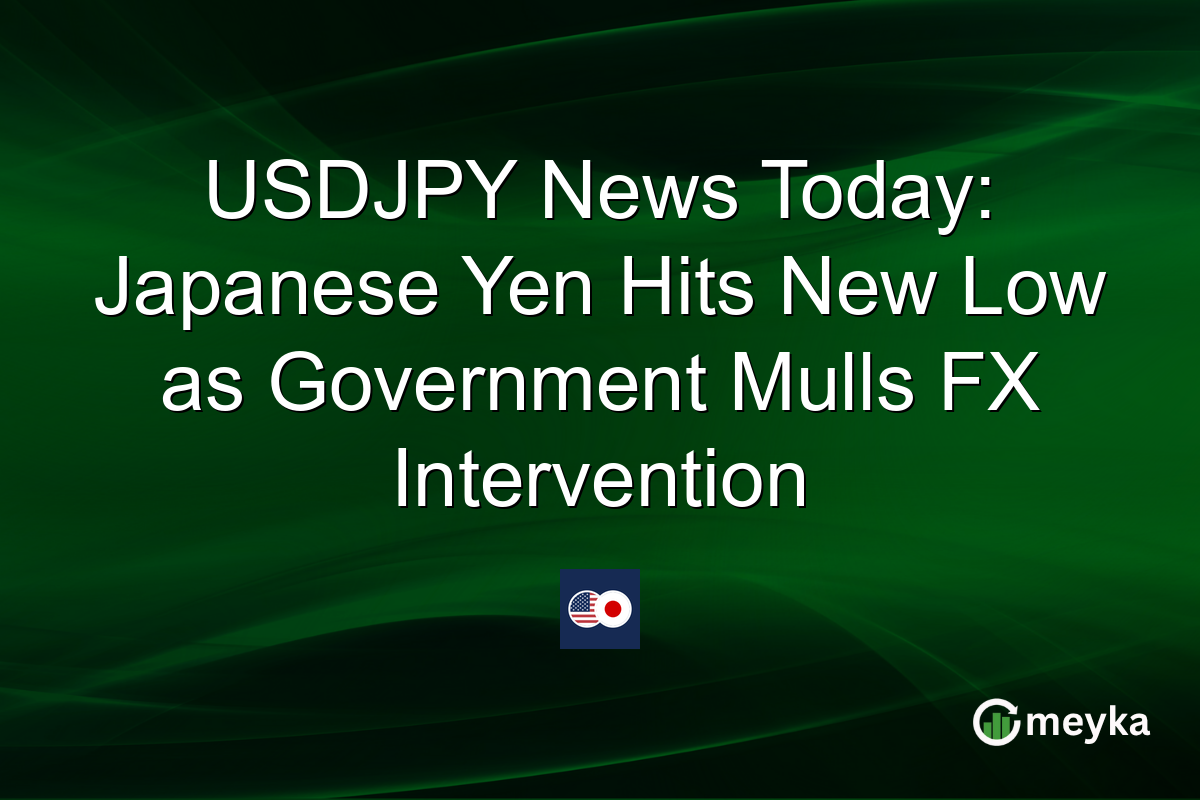USDJPY News Today: Japanese Yen Hits New Low as Government Mulls FX Intervention
The Japanese yen has plummeted to a 30-year low against the US dollar, stirring waves in global markets. This historic drop in the Japanese yen exchange rate has sparked renewed discussions over possible intervention by Japan’s finance ministry. Investors are closely watching, speculating on the potential impact of any government action aimed at stabilizing the yen.
Understanding the USDJPY Currency Movement
The USDJPY currency movement shows a steep decline in the yen’s value. As of October 8, 2025, the yen plunged to levels not seen in decades. The exchange rate stood at USDJPY=X, marking significant vulnerability in Japan’s currency. Analysts point to several factors, including divergent monetary policies between Japan and the US. The Federal Reserve’s ongoing rate hikes have strengthened the dollar, while the Bank of Japan maintains an ultra-loose policy. This divergence is a key driver behind the yen’s weakness. As the gap widens, so too does the pressure on Japan’s currency, leaving many to wonder how low it can go.
Japan FX Intervention: What Could Happen?
Japan’s FX intervention may be on the horizon as the government faces mounting pressure to act. Officials have repeatedly expressed concern about the yen’s rapid depreciation, hinting at possible measures. Historically, interventions involve selling dollars and buying yen to boost its value. Despite previous efforts, interventions are seen as a short-term fix. The finance ministry’s decision hinges on balancing economic stability and market confidence. This situation has drawn international attention, with global investors curious about Japan’s next move. More details can be found in recent articles like this Reuters report.
Impact of Yen Depreciation on Global Markets
Yen depreciation affects global markets in various ways. Many Japanese firms rely on imports, which become more expensive as the yen weakens. This contributes to higher costs, which could translate into lower profits or increased consumer prices. Internationally, a weak yen can impact global supply chains, especially in electronics and automotive sectors. Moreover, fluctuations in the yen exchange rate add to market volatility. Traders may look to safe-haven assets, adding pressure on other currencies. This creates a complex web of economic implications, further increasing the stakes for Japan’s potential intervention. For more insights, check CNBC’s coverage.
Final Thoughts
The Japanese yen exchange rate’s plunge to a 30-year low is a crucial issue with global ramifications. As the yen loses ground against the dollar, Japan’s potential FX intervention becomes more pertinent. While such actions could temporarily lift the yen, the underlying issues remain challenging. For investors keen on understanding these dynamics, platforms like Meyka provide real-time financial insights. As the situation unfolds, close monitoring and swift adaptation will be key strategies for stakeholders navigating these currency movements.
FAQs
The Japanese yen is weakening due to differing monetary policies between the US and Japan. The Federal Reserve’s rate hikes strengthen the dollar, while the Bank of Japan’s loose policies pressure the yen.
Japan could intervene by selling US dollars and buying yen to strengthen its currency. This approach aims to stabilize the yen but is usually a short-term measure.
A weak yen raises import costs for Japan, affecting profits and prices. It also adds volatility to global markets, impacting sectors like electronics and automotive.
Disclaimer:
This is for information only, not financial advice. Always do your research.






